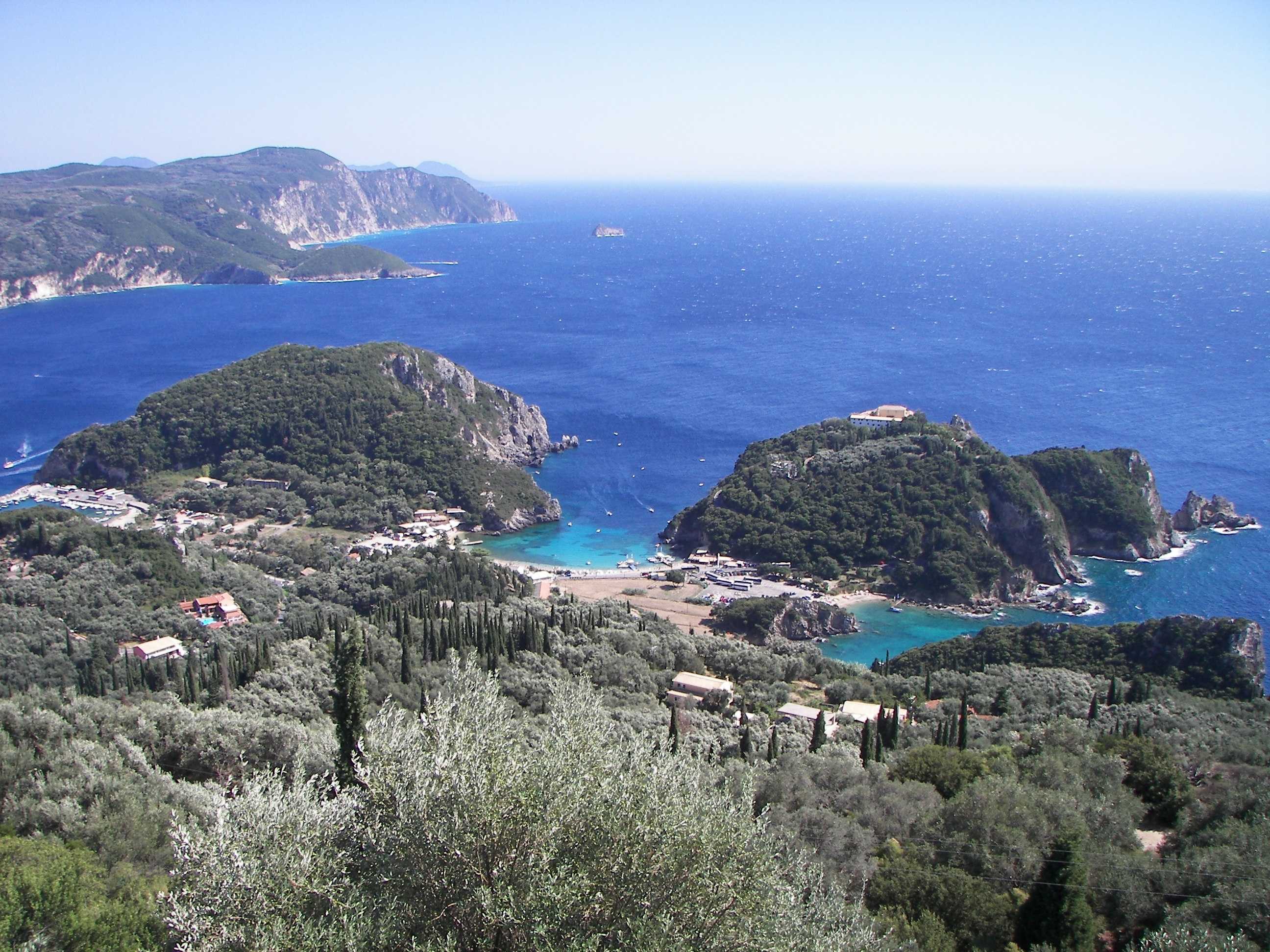The monastery of the Holy Theotokos, also known as Paleokastritsa Monastery, is one of the oldest in Corfu, dating back to 1225. It is above the town of Palaiokastritsa. It's a fascinating place to explore with a beautiful little Byzantine church and monastery and a fabulous view over the sea below.
To get to the monastery take the steep, narrow road that starts from the main beach and winds its way through the groves of tall cypress and olive trees.
The small Church, dedicated to the Holy Virgin Mary, is a typical Byzantine style church with a rich, dark, mysterious interior of painted ceilings and icons and tall single pews.
The monk’s cells were added in the 18th Century. Inside the monastery is a courtyard with a portico and a small museum of Byzantine and post-Byzantine icons, books, souvenirs and memorabilia. There is also a massive skeleton of a whale, which is said to have been killed by a fisherman in the 19th century.
Greek mythology relates that the bay of Palaiokastritsa was where Poseidon and a nymph (Kerkya) were ship wrecked. Poseidon fell in love with Kerkyra (the Greek name for Corfu) who was the daughter of the river-god Asopos.
In their ensuing relationship, the nymph and sea god created a race called the Phaeacians, skilled sailors that inhabited Corfu and helped Odysseus in his last stop on his journey back to Ithaka.
When Odysseus was shipwrecked at Palaiokastritsa, Nausicaa, undisturbed by his filthy state, took him to her father’ s palace, with its exquisite gardens that bloomed and bore fruit throughout the year, and it is there that King Alcinous, deeply moved to be meeting a hero of Troy, decided to send him home to Ithaca on one of his ships, so that his Odyssey may be ended.
Unfortunately, Poseidon turned the ship to stone in his anger at Odysseus's men blinding his son, the Cyclops.

- Monday:
- Open 24 Hours
- Tuesday:
- Open 24 Hours
- Wednesday:
- Open 24 Hours
- Thursday:
- Open 24 Hours
- Friday:
- Open 24 Hours
- Saturday:
- Open 24 Hours
- Sunday:
- Open 24 Hours







